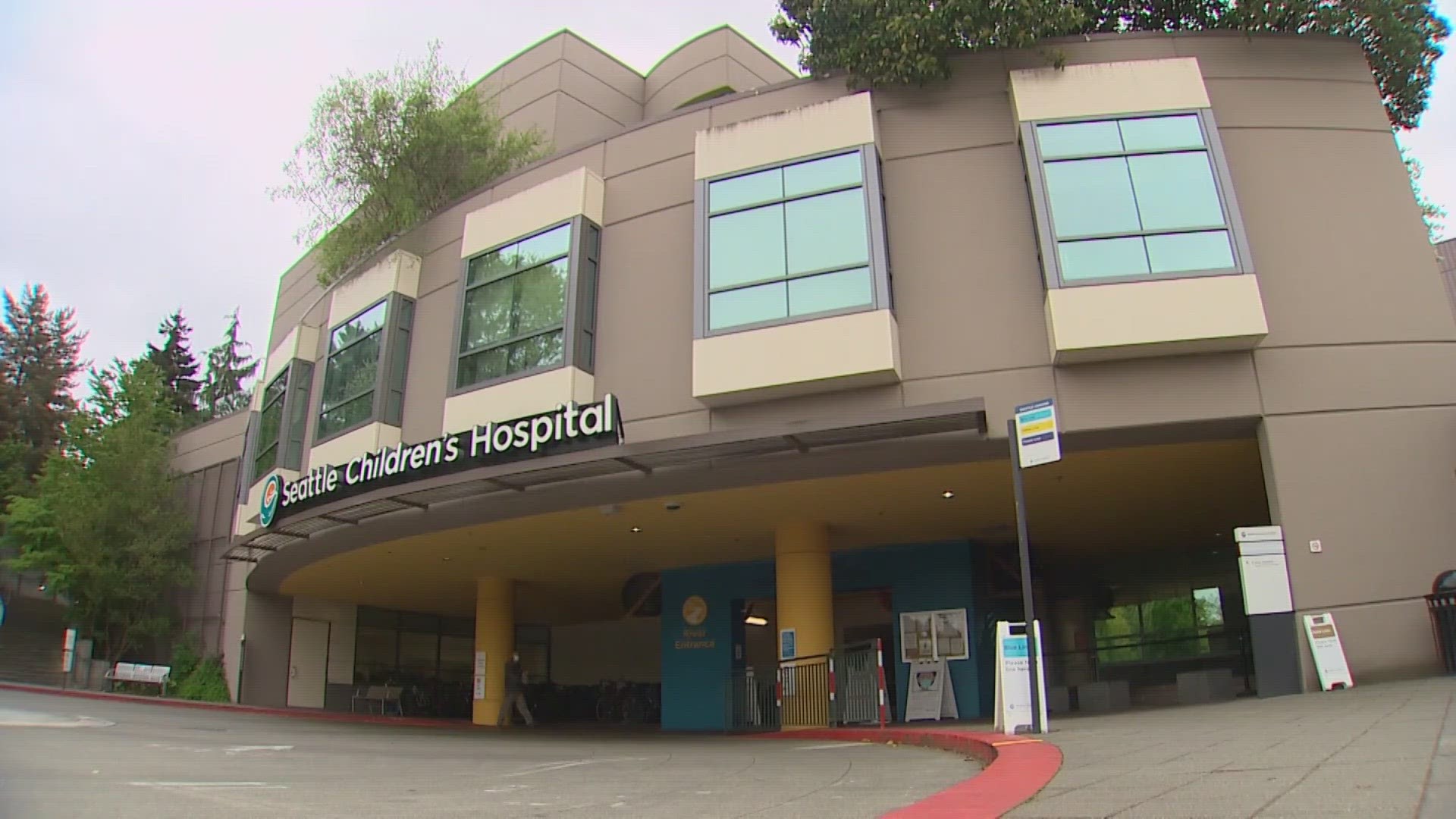SEATTLE — Forty-four nurses at the state's largest pediatric hospital describe working "in a persistent state of fear" in the psychiatric and behavioral medicine unit.
The Washington State Nurses Association issued a release on behalf of employees at Seattle Children's hospital, who sent a letter to the facility on Nov. 17 urgently requesting more help in their unit.
WSNA said twice in the last two weeks, police have been called to mitigate violent incidents in the unit.
On Nov. 7, WSNA said police responded after "patients turned over carts, used a pole to swing at people, broke windows, and held a nurse in a chokehold."
WSNA said the same day, a nurse in a different part of the unit was "choked, struck in the head 16 times, and nearly lost consciousness."
“Having 12 officers come in and escort a patient out is a sign we are under-resourced and also traumatizing,” Natasha Vederoff, a nurse on the unit, said in the release.
“I'm exhausted from constantly reacting to dangerous behaviors and trying to prevent serious harm,” Henry Jones, another nurse on the unit, added. “In our current state, I feel like I'm functioning more like a bouncer or a prison guard.”
In the letter, WSNA said nurses requested three security officers in the unit during the day and one at night. There was also a request for additional nurses with specialties to improve the available resources, not to have the nurse-to-patient ratio exceed 1-to-8, and for "double pay during the crisis to encourage nurses to remain on staff."
WSNA said the Psychiatry and Behavioral Medicine Unit was designed to only care for patients in a short-term capacity of three to seven days. They said Seattle Children's instead has some patients who are in the unit for months and sometimes over a year due to the lack of residential care beds for children in the state.
“The lack of infrastructure and social supports in the mental healthcare system and lack of funding is the root cause of what’s happening,” said Amy Lamson, a Seattle Children's nurse in the unit. “These lashing outs are exacerbated by hospital leadership who are not providing resources to handle the current reality.”
“The reality is we are forced into this situation,” said Brayden Schander, another nurse on the unit. “If the state and nation are not going to change, Seattle Children’s needs to build a residential facility to meet long-term care needs.”
Seattle Children's released a statement to KING through a spokesperson in response to the WSNA release, which reads:
“Our country is facing an escalating youth mental and behavioral health crisis and the demand for services remains alarmingly high. The safety, security and well-being of Seattle Children’s patients and workforce is our top priority and we have intensified efforts over the past several months to address this demand. Last month, we opened an Emergency Operations Center in response to the mental health crisis, to streamline communication and decision-making and immediately address concerns. Seattle Children’s has brought in additional staffing resources and increased both leader and security presence on the Psychiatry and Behavioral Medicine Unit (PBMU). The team is also actively seeking travel nurses to provide supplemental staffing and patient care.
While these critical steps support the immediate safety of our workforce and patients, Seattle Children’s cannot solve this crisis alone. This work is ongoing, and we are actively collaborating with external partners at the local, state, and federal level to identify and eliminate barriers and find rapid solutions to address the extremely high number of patients seeking care for mental and behavioral health crises across the state. Greater investment in youth mental health is critical to build a pediatric mental health system that encompasses upstream prevention to the highest acuity and complexity to meet the needs of Washington’s youth.”
Vederoff and other nurses still don't feel their concerns have been addressed.
“These kids are broken and they are lost and they have nowhere else to go, so we need change to happen," she said. "I want to stick through and see change happen because I care these kids, we care about these patients and we need something to change from leadership because I don’t want to just abandon ship.”
Violence towards nurses and healthcare workers in general has become more common in recent years. Data shows that American healthcare workers now suffer more nonfatal injuries from workplace violence than workers in any other profession, including law enforcement.
In July, a security guard at an Oregon hospital was shot and killed by a visitor who had been causing trouble in the maternity ward.
Recent nurse strikes at Providence Everett and Kaiser Permanente came partly due to workplace safety and staffing issues.
The state budget passed in the Legislature this year includes funding for programs designed to grow the healthcare workforce totaling $24 million, according to the Washington State Hospital Association.
A portion of that money will go toward multi-state nurse licensing and increasing nursing slots in the community college system.

